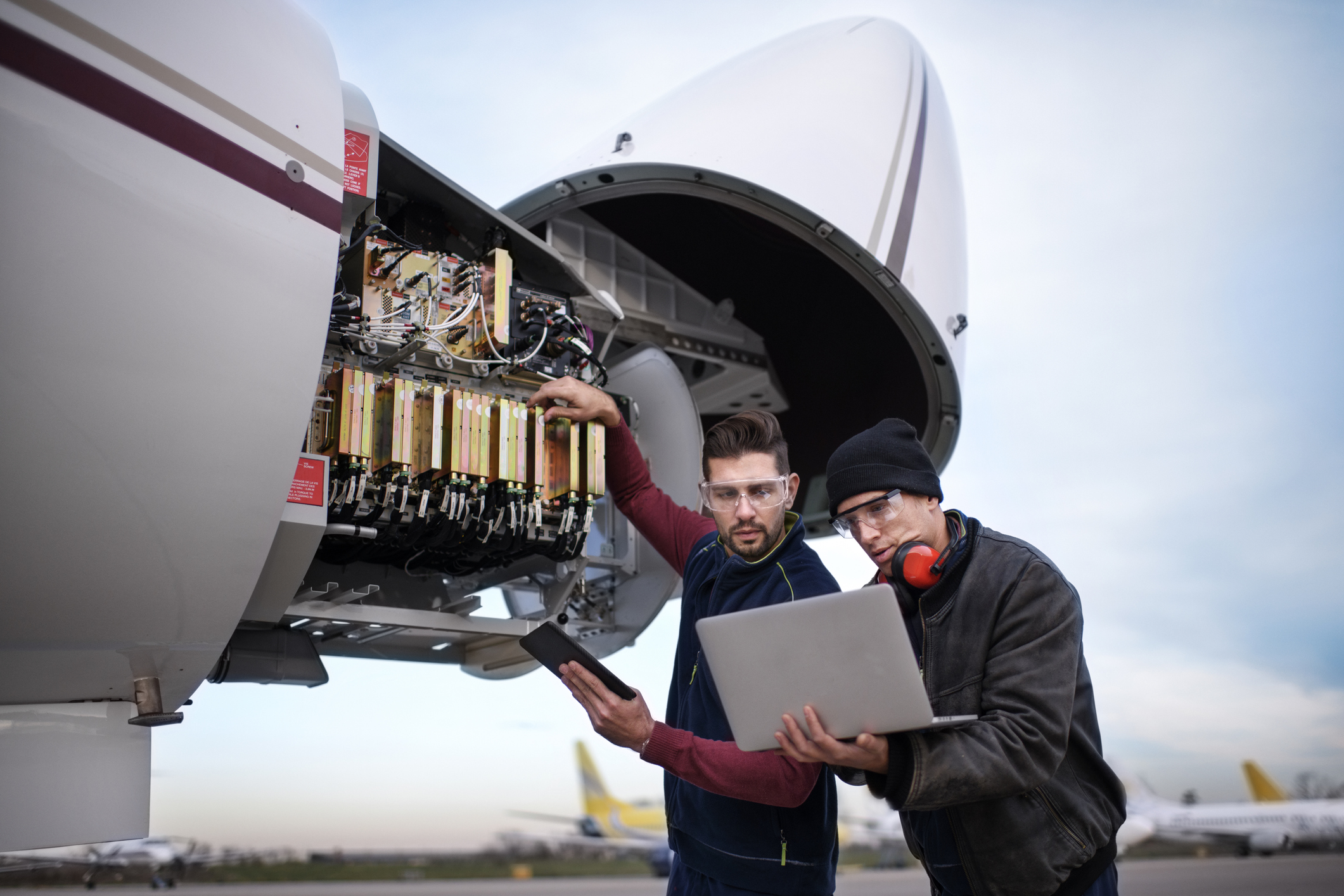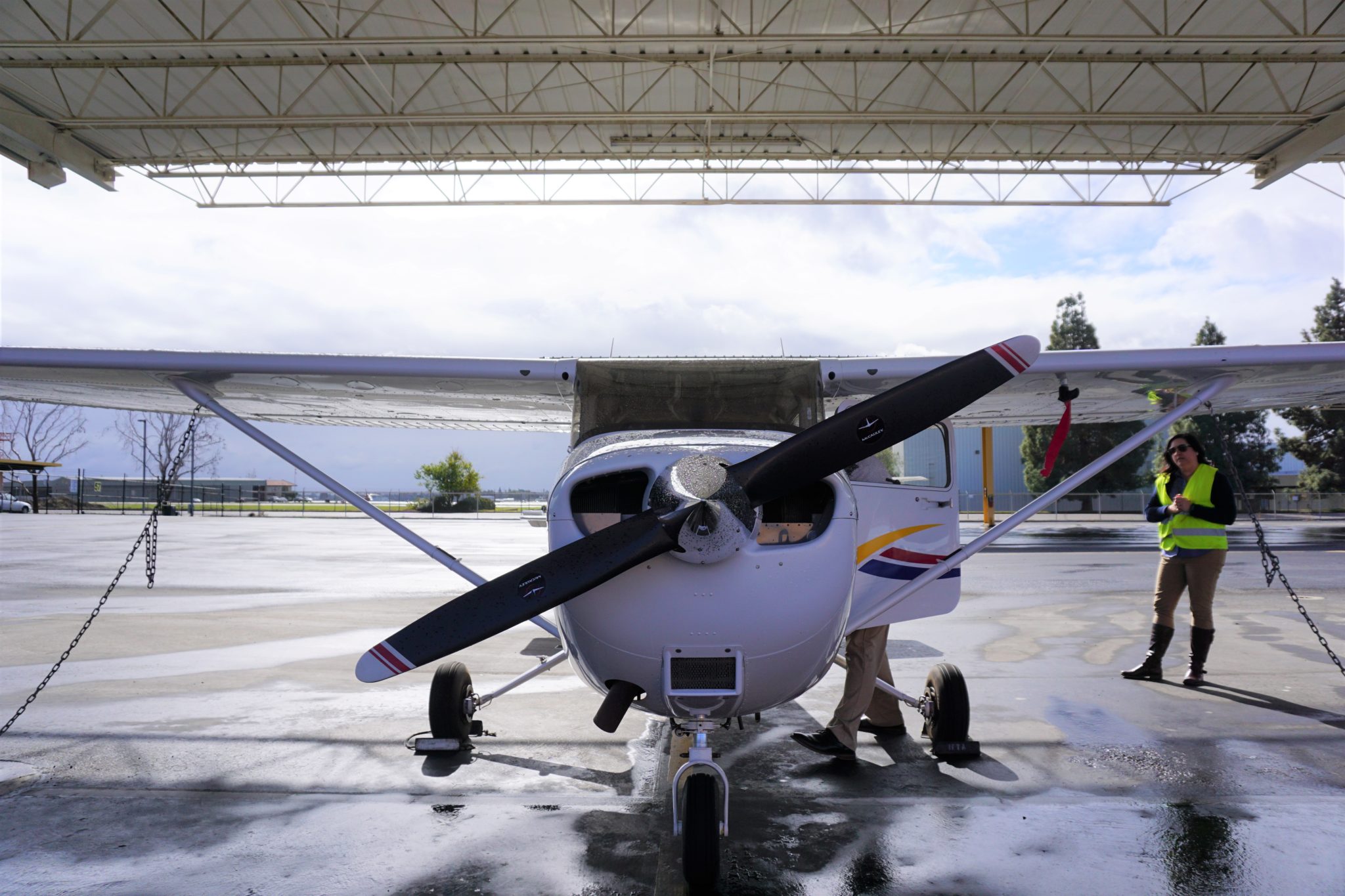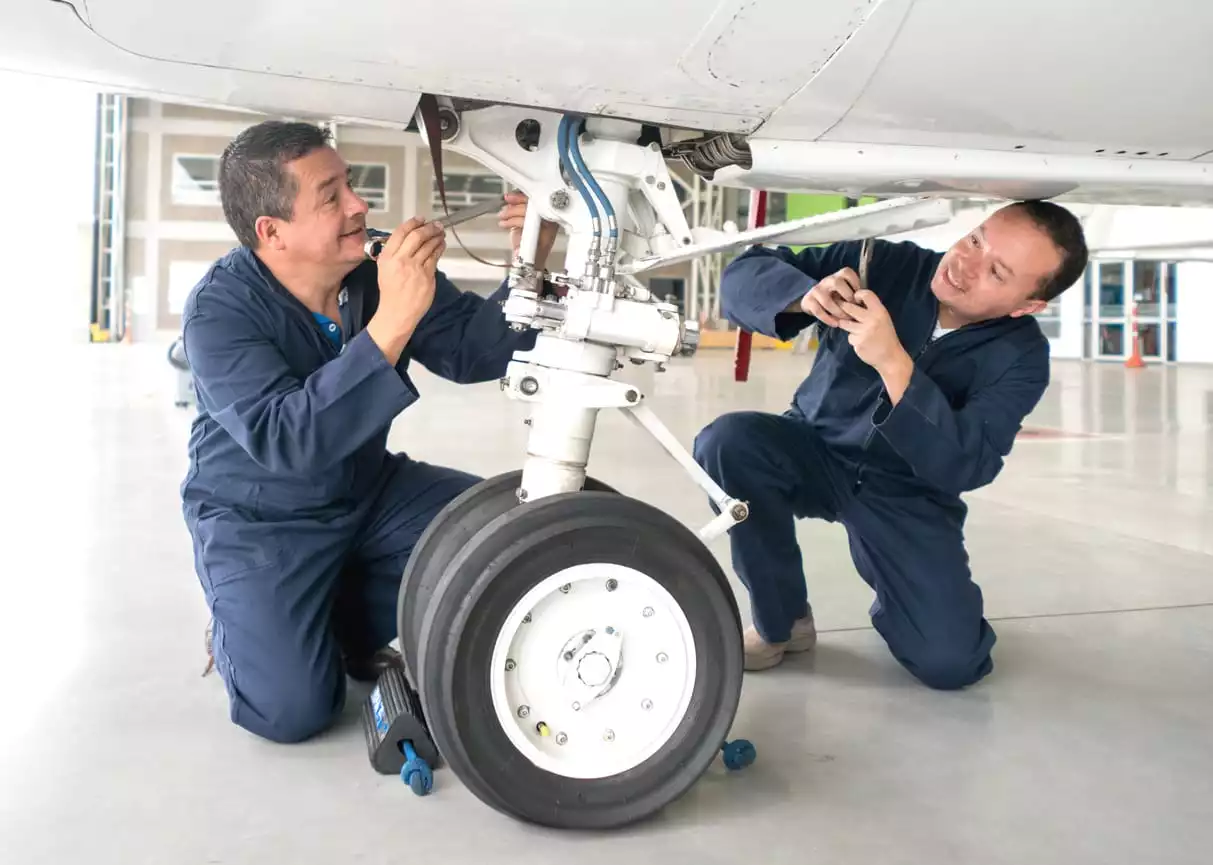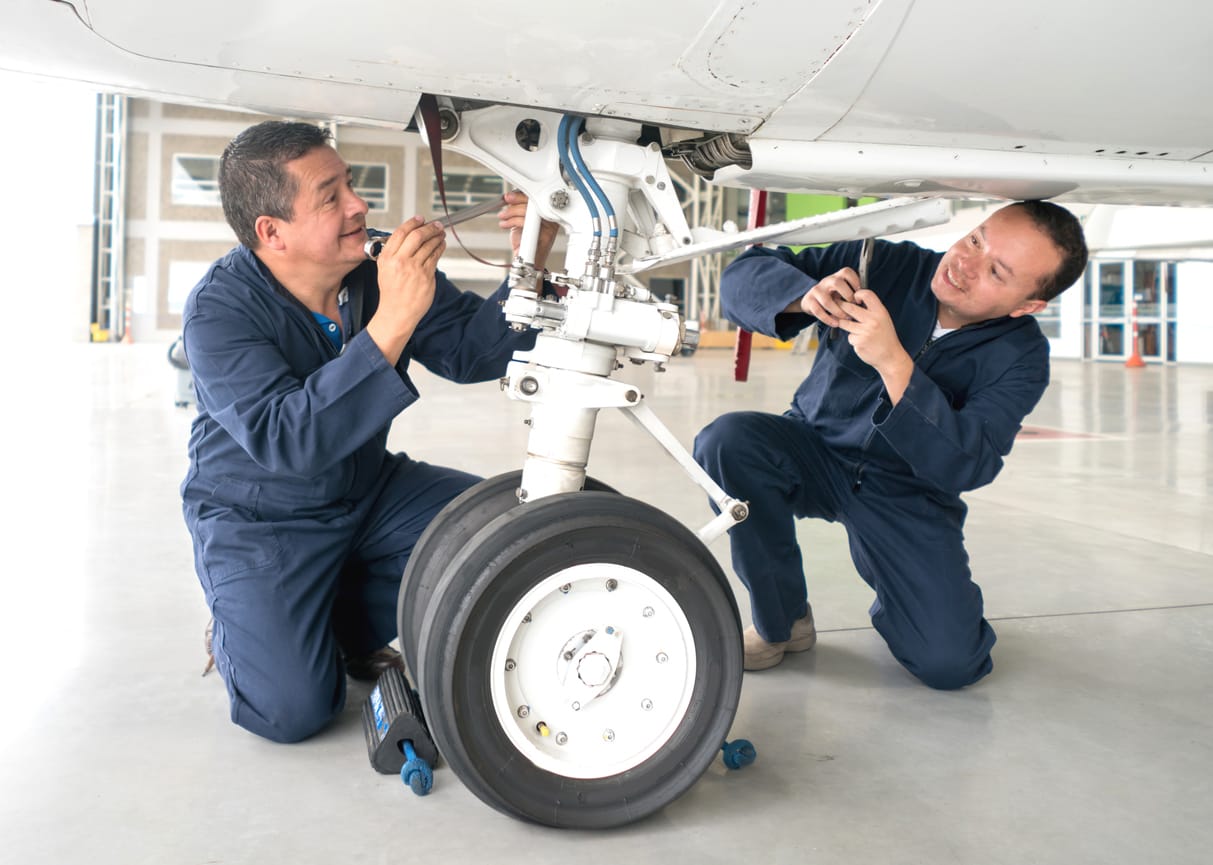The safest aircraft are those that are maintained regularly. Some airplanes require constant maintenance just to be considered airworthy. However, as with a car, waiting until something breaks is not an effective way to keep it in optimal condition. Implementing a proactive cycle to keep the aircraft running safely and smoothly is much better: upkeep – check – service – repair.
What Is Preventive Maintenance?
Preventive aviation maintenance aims to prevent a part or component from breaking down, so standard checks are carried out regularly as part of a routine. These assessments are generally done according to a pre-set schedule (preflight, annually, etc.) or after a certain amount of time, such as 50- and 100-hour inspections. Because preventive aviation maintenance is about assuring the safety and reliability of the aircraft, it can also include upgrades, repairs, etc.
Examples of Preventive Maintenance in
- Landing gears and wheels (changing tires and wheels).
- Lubricating items that aren’t required to be taken apart.
- Adding fluids, such as oil, hydraulic fluid, and fuel.
- Replacing restraint devices.
- Removing and cleaning spark plugs.
- Replacing batteries.
- Replacing hose connections (not hydraulics).
Who Decides What Can Be Maintained?
The Federal Aviation Administration (FAA) publishes Federal Aviation Regulations (FARs) that cover practically everything regarding aviation in the US, including aviation preventive maintenance. Title 14 of The Code of Federal Regulations Part 43, Appendix A contains the list of FAA preventive maintenance tasks that focus on aircraft.
There are 31 items, and any tasks not included on the list are not considered FAA preventive maintenance (there are other maintenance categories). Aviation Maintenance Technicians (AMTs) are licensed airframe and powerplant mechanics, which qualifies them to do everything on the preventive aviation maintenance list. Airframe and Powerplant (A&P) are two separate ratings, usually obtained together, yet each has its own focus.
Airframe & Powerplant Maintenance
Airframe mechanics specialize in inspecting, diagnosing, and repairing the mechanical parts of the aircraft – much more than just the airplane’s frame, although that is also included. This specialization consists of the flight control surfaces, components of the engine, and all of the electrical systems. Airframe mechanics must be able to find defects or damage, analyze what caused the problem, evaluate the most effective way to fix the issue, and efficiently perform the repairs. By extension, airframe mechanics must have a wide array of parts and tools on hand, or know where they are located. These maintenance technicians must also have the skills to operate large and small power tools and know the best tool for the job at hand.
Powerplant mechanics are much more focused on the inner workings of the aircraft engines – their power sources. These mechanics specialize in turbines, pumping equipment, fuel flow, propeller assemblies, and fittings. Because powerplant technicians install and overhaul engines, they must have an extensive understanding of chemical and fuel composition, metals, and other resource materials. They also need to have a firm grasp of electrical systems as they relate to battery processes. Powerplant mechanics must be knowledgeable about areas such as physics, aircraft blueprints, and metering. Preventive maintenance does not cover complex assembly operations, such as small pieces or parts that require being taken apart to service.
Even though the focus is different, the airframe and powerplant ratings are usually obtained together so that an AMT with both ratings can work on the entire aircraft, as previously stated. A&P mechanics must document all procedures in an aircraft logbook, which is an FAA requirement. Additionally, the more time A&P mechanics spend on preventive maintenance, the more reliable, efficient, and safer the airplane becomes.
Why Is Aviation Preventive Maintenance So Important?
There are several reasons why preventive aviation maintenance is beneficial to all aircraft and aircraft operators. Knowing how to perform it is a crucial skill that helps keep airplanes flying. Here are some of those benefits.
Increased Flight Safety
The underpinning factor in aviation is always safety. Preventive maintenance helps ensure safe operations and minimize unexpected delays by catching potential concerns before they become problems and addressing them before they lead to performance issues. The FAA or the aircraft manufacturer has set regular inspection schedules for each airplane or type of aircraft. Trained A&P mechanics can find deteriorating or damaged sections during those routine inspections and fix them before they potentially fail during a flight.
Aircraft Efficiency and Reliability
Performance stability is a baseline that shows the reliability of an aircraft when operating in general conditions with all systems in working order. Aircraft that are regularly maintained perform better. This fact is true for all machinery and equipment. A&P mechanics are responsible for performing preventive maintenance to ensure that aircraft can be ready whenever needed.
They must guarantee (literally with their signature) that they are satisfied that an aircraft is airworthy. A lack of preventive maintenance can decrease the efficiency and reliability of any aircraft by lowering its performance stability. If an airplane operates with even one system out of working order, other systems must work harder to compensate. This scenario can be avoided with proper preventive maintenance performed regularly by a certified AMT.
Long-Term Cost-Effectiveness
A grounded airplane is money lost. Preventive maintenance helps reduce this. Consider the following: Which costs more, an oil change or an engine replacement? An oil change falls under preventive aviation maintenance as a routine procedure. An engine replacement is a consequence of what will happen if the regular oil changes don’t occur. This simple example shows how preventive maintenance can be very cost-effective in the long term.
Learning About Aviation Maintenance
Preventive aviation maintenance is essential, and the airframe and powerplant technicians who perform these services are vital to the industry. Training for aircraft maintenance technician careers requires learning specific skills and mandatory certification. Whether you are interested in a career as an A&P mechanic or only want to maintain your own aircraft, accessing training is a practical step to ensure all the above benefits. California Aeronautical University is an FAA-approved Part 147 training institution where you can learn the skills needed to graduate with an AMT diploma. If you choose, you can also earn an associate’s degree in 5 additional months.
Not only will you learn about FAA preventive maintenance, aircraft structure, airframe and powerplant systems, and engine theory, but you will also receive a personalized 263-piece Sonic Tools toolkit when you graduate. There are numerous benefits to becoming an A&P mechanic. In addition, the employment trend in the airline service and technician field is projected to grow faster than average (10% to 15%) by 2030. Find out how we can help your career take off – contact us today!
Ready to soar in your aviation career?
Mr. Matthew A. Johnston has over 23 years of experience serving various roles in education and is currently serving as the President of California Aeronautical University. He maintains memberships and is a supporting participant with several aviation promoting and advocacy associations including University Aviation Association (UAA), Regional Airline Association (RAA), AOPA, NBAA, and EAA with the Young Eagles program. He is proud of his collaboration with airlines, aviation businesses and individual aviation professionals who are working with him to develop California Aeronautical University as a leader in educating aviation professionals.



